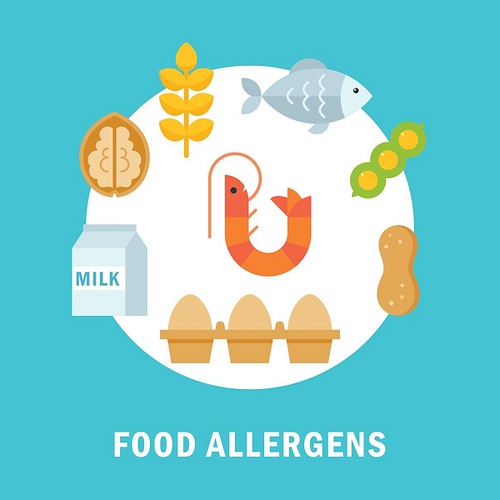“Managing Food Allergies in Children” is a comprehensive article that falls under the realm of kids’ health. This informative piece covers a wide range of health topics specifically related to children. From common ailments such as coughs and colds, to more serious conditions like meningitis and obesity, this article offers an array of valuable information for parents and caregivers. Additionally, it includes a symptom checker and a health service finder tool, providing users with practical resources to help manage their child’s health effectively. Whether it’s understanding food allergies or seeking appropriate medical services, this article serves as a reliable guide for navigating the complexities of children’s health.
Managing Food Allergies in Children
Understanding Food Allergies in Children
Food allergies occur when the immune system reacts abnormally to certain foods, viewing them as harmful substances. These reactions can range from mild symptoms like hives or itching to severe reactions that can be life-threatening, such as anaphylaxis. In children, food allergies are becoming increasingly common, with studies showing that up to 8% of children are affected by them. Understanding the basics of food allergies is crucial for parents and caregivers to effectively manage and keep children safe.
Common Food Allergens in Children
Certain foods are more likely to cause allergic reactions in children. The most common food allergens include peanuts and tree nuts, milk and dairy products, eggs, wheat and gluten, soy, and fish and shellfish. These allergens have the potential to cause severe allergic reactions, and it is important for parents to be aware of them and take necessary precautions to prevent exposure.

Identifying Food Allergy Symptoms in Children
Recognizing the symptoms of food allergies is an essential step in managing them. In children, food allergy symptoms can manifest in various ways. Skin reactions, such as hives, itching, or swelling, are common. Digestive system reactions, such as vomiting, diarrhea, or abdominal pain, may also occur. Respiratory system reactions, like wheezing or difficulty breathing, can be alarming. Additionally, cardiovascular system reactions, including a drop in blood pressure, rapid pulse, or loss of consciousness, may indicate a severe allergic reaction. Being able to identify these symptoms promptly is crucial for immediate intervention and medical attention.
Diagnosing Food Allergies in Children
If a child displays symptoms suggestive of a food allergy, it is important to seek a proper diagnosis. A physical examination by a healthcare professional will help assess the child’s symptoms and medical history. Allergy testing may be recommended to confirm the presence of specific allergens in the child’s system. This can be done through skin prick tests or blood tests. In some cases, a food diary and elimination diet may be used to identify triggers by systematically removing suspected allergens from the child’s diet and reintroducing them under medical supervision.

Creating a Safe Environment for Children with Food Allergies
To ensure the safety of children with food allergies, it is essential to create a safe environment both at home and in other settings. Reading food labels and being aware of potential allergens in products is crucial. Cross-contamination prevention is also important, which involves keeping allergens separate from other foods during preparation and handling. Safe food handling and preparation practices should be followed to minimize the risk of accidental exposure. Educating family members and caregivers about food allergies and training them in emergency procedures such as administering epinephrine can also contribute to a safe environment.
Food Allergy Management at Home
Managing food allergies at home requires careful meal planning and grocery shopping. It is important to identify allergen-free alternatives and ensure they are readily available. Cooking and baking practices should exclude allergens and cross-contamination. When eating out or attending social events, it is crucial to communicate with food service providers and inquire about allergen-free options. Carrying emergency medication, such as epinephrine, and educating family members, friends, and caregivers about emergency protocols is essential for managing food allergies outside the home.

Managing Food Allergies at School
Children spend a significant amount of their time at school, making it essential to address food allergy management in educational settings. Effective communication with school staff is key to ensure they are aware of the child’s allergies and any necessary accommodations that need to be made. Developing an individualized education plan (IEP) can help outline specific requirements for the child, including allergy-friendly classrooms and lunchrooms. Training staff and students on food allergy protocols, such as reading labels and recognizing symptoms, can create a safer environment for all.
Teaching Children about Food Allergies
Educating children about their food allergies empowers them to take ownership of their health and advocate for themselves. Providing age-appropriate education on food allergies can help children understand the importance of avoiding allergens and recognizing their symptoms. Teaching children how to read food labels is crucial in helping them identify potential allergens. Encouraging open communication with teachers, friends, and peers can also promote understanding and support for children with food allergies.

Emergency Preparedness for Food Allergies
While preventive measures are crucial in managing food allergies, it is important to be prepared for emergencies. Developing an emergency action plan is essential, including clear instructions on when and how to administer epinephrine. Communicating the emergency plan to family members, caregivers, and school staff is crucial. Regularly reviewing and updating the plan as needed is important to ensure preparedness.
Seeking Professional Help for Food Allergies
Managing food allergies can be complex, and seeking professional help is highly recommended. Consulting a pediatric allergist can provide expert guidance on diagnosis, treatment, and management strategies. Working with a registered dietitian can help ensure the child receives proper nutrition while avoiding allergens. Joining support groups and online communities can provide valuable emotional support and a platform to exchange information and resources with other parents facing similar challenges.

In conclusion, managing food allergies in children requires a comprehensive approach that includes understanding the basics of food allergies, identifying common food allergens, recognizing symptoms, seeking a proper diagnosis, creating a safe environment, and teaching children about their allergies. Effective management at home and school, as well as emergency preparedness, are also key components. Seeking professional help and support can further enhance the overall care and well-being of children with food allergies. By implementing these strategies, parents and caregivers can successfully manage food allergies and ensure the safety and well-being of their children.
